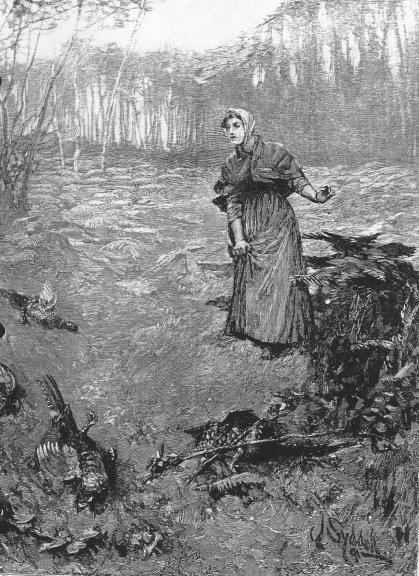The plantation wherein she had taken shelter ran down at this spot into a peak, which ended hitherward, outside the hedge being arable ground. Under the trees scores of pheasants lay about, their rich plumage dabbled with blood.
Joseph Syddall
31 October 1891
25.3 cm by 19.3 cm (10 ⅛ inches high by 7 ¾ inches), framed
Hardy's Tess of the D'Urbervilles in the London Graphic, Chapter XLI, 509.
[Click on the image to enlarge it.]
Scan and text by Philip V. Allingham.
